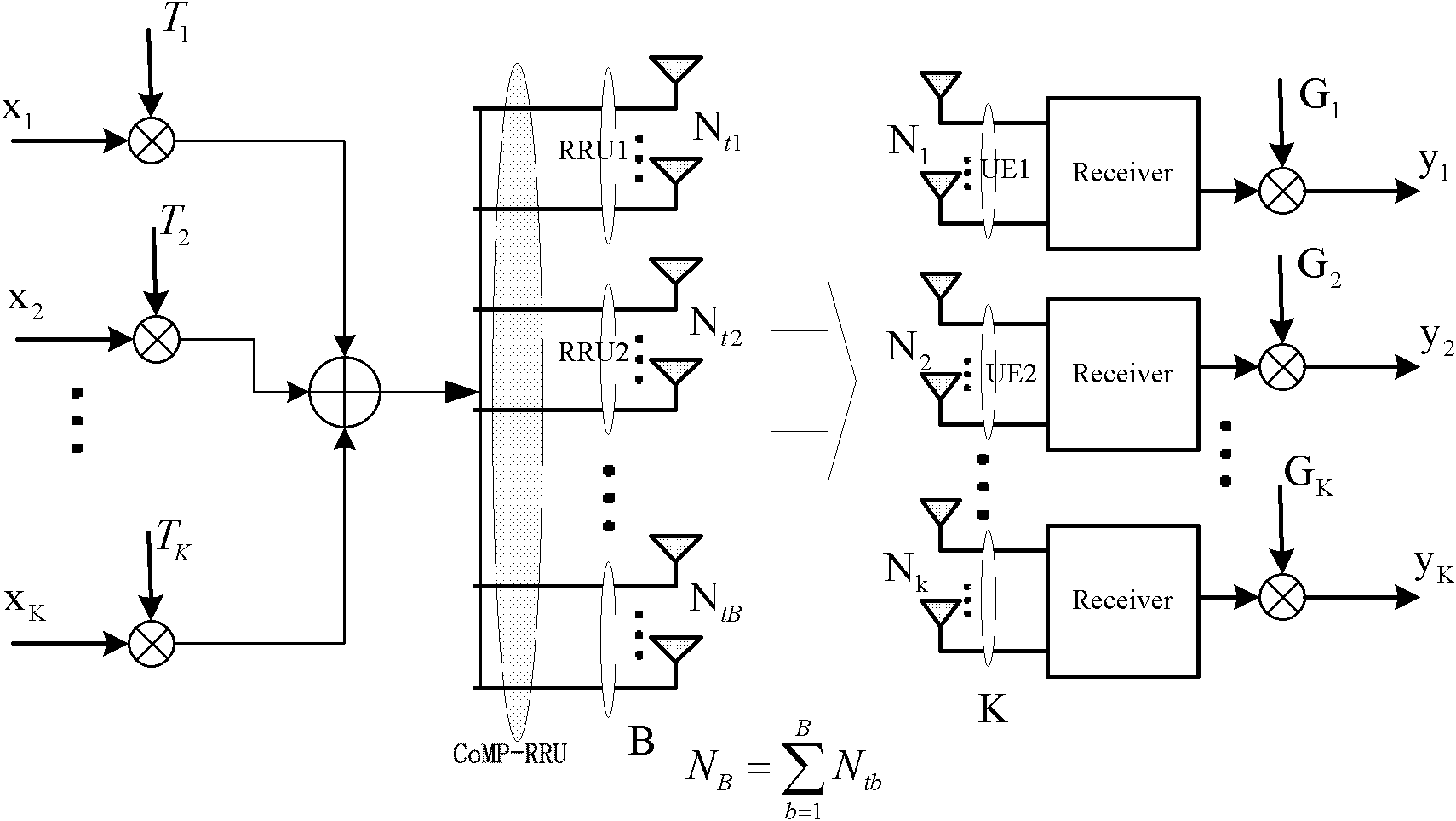Adaptive joint linear precoding method applicable to multi-base station coordination
A linear precoding and adaptive technology, applied in electrical components, digital transmission systems, error prevention and other directions, can solve the problems of unconsidered interference, multi-user interference, and high complexity, reducing multi-stream interference and improving transmission. The effect of performance and low overhead
- Summary
- Abstract
- Description
- Claims
- Application Information
AI Technical Summary
Problems solved by technology
Method used
Image
Examples
Embodiment Construction
[0019] The adaptive joint linear precoding method suitable for multi-base station cooperation proposed by the present invention, wherein the schematic diagram of the communication relationship between each cooperative base station and user equipment is as follows figure 1 As shown, its flow chart is as follows figure 2 shown, including the following steps:
[0020] (1) Assuming that there are B cooperative base stations in the wireless communication network, which constitute a cooperative area, and there are K users in the cooperative area, each cooperative base station obtains the current accurate channel state information from the cooperative base station to each user in the cooperative area, and obtains The current channel matrix H of all cooperative base stations for the jth user j , where j is 1, 2, ... K, then the channel matrix of all cooperative base stations to all users is T is matrix transpose;
[0021] (2) Maximize the signal leakage interference noise ratio S...
PUM
 Login to View More
Login to View More Abstract
Description
Claims
Application Information
 Login to View More
Login to View More - Generate Ideas
- Intellectual Property
- Life Sciences
- Materials
- Tech Scout
- Unparalleled Data Quality
- Higher Quality Content
- 60% Fewer Hallucinations
Browse by: Latest US Patents, China's latest patents, Technical Efficacy Thesaurus, Application Domain, Technology Topic, Popular Technical Reports.
© 2025 PatSnap. All rights reserved.Legal|Privacy policy|Modern Slavery Act Transparency Statement|Sitemap|About US| Contact US: help@patsnap.com



